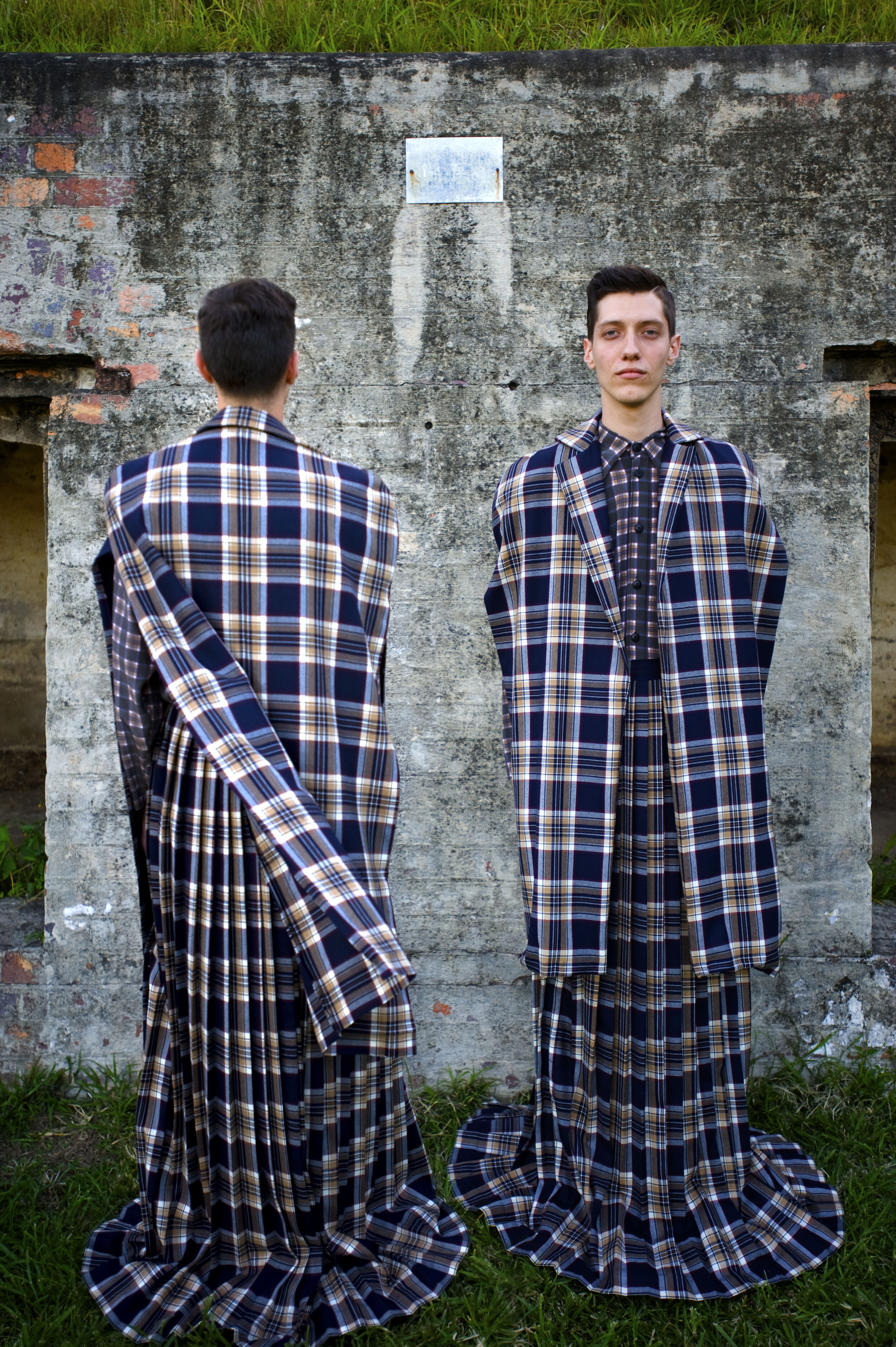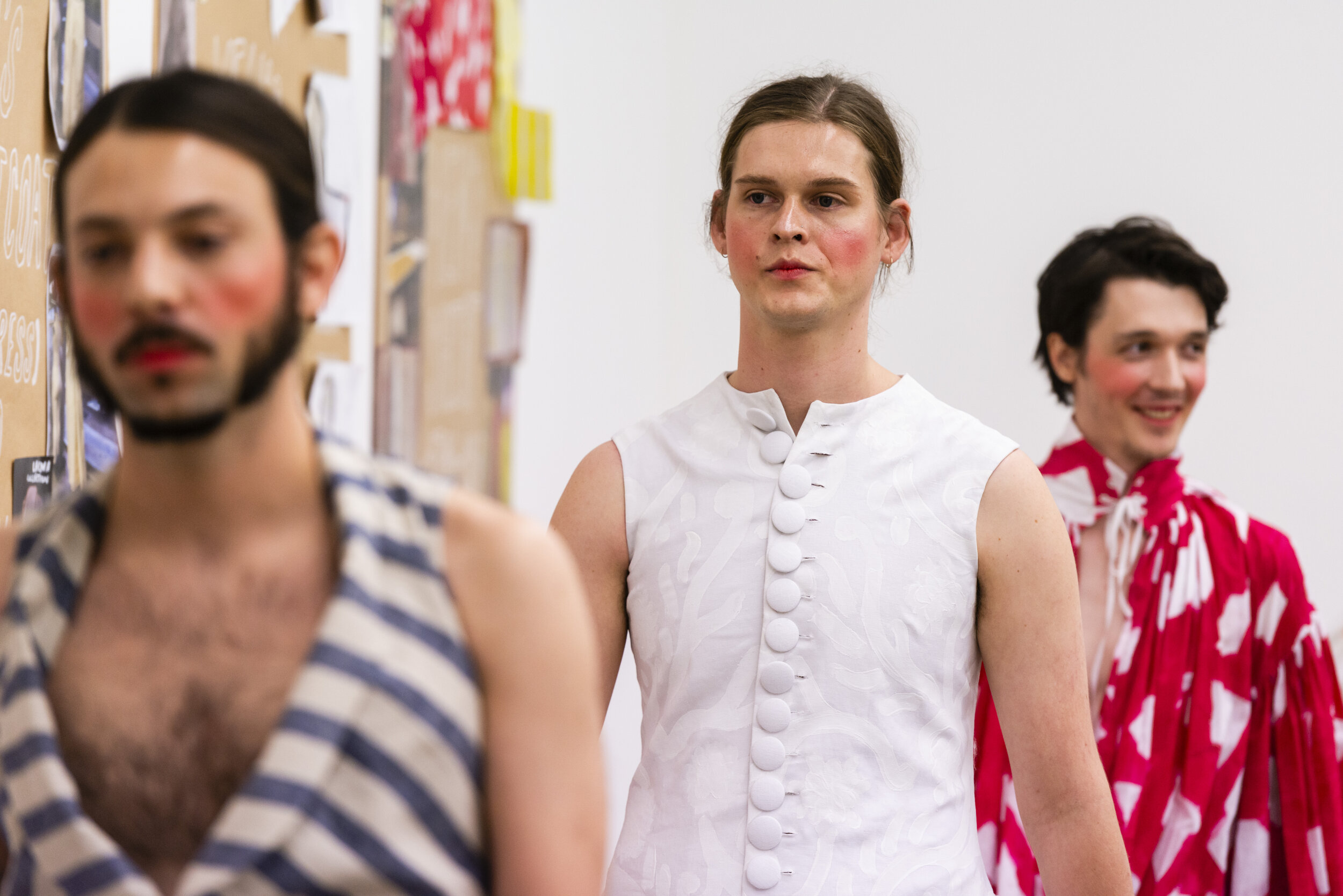
The Great Masculine Renunciation
PhD creative practice Collection
Queensland University of Technology
Exhibited May 2019, Outer Space, Brisbane
The Great Masculine Renunciation
The Great Masculine Renunciation is a collection designed and made as an outcome of my practice-led PhD thesis titled:
TOWARDS A QUEER DESIGN PRACTICE FOR MENSWEAR: DISRUPTING HISTORICAL GENDER(ED) NARRATIVES (2021).
The collection This practice-led research (PLR) project explores distinct historical gendered narratives in the past, and how they have been perpetuated through dress, fashion, and the body within a Euro-modernity context.
Postmodernism and queer theory are utilised as a theoretical framework to critique and challenge the legitimacy of binary norms of gender in the past, and to propose queer temporalities for menswear and the expression of masculinity in the present. This project locates J. C. Flügel’s 1930 thesis ‘The Great Masculine Renunciation and its Causes’ as a moment of crystallisation for essentialist gender roles and their subsequent aesthetics. Flügel’s thesis serves as an example of a Western historical gendered narrative and is used as a creative catalyst for fashion design PLR. Identifying these narratives relies on tracing historical precedence and understanding the ways in which the past and present are in dialogue with each other, yielding new understandings and readings of the past in order to create new knowledge in the present.
This research offers two contributions to the knowledge surrounding fashion design practice and theory:
First, it outlines the ways in which historical gendered narratives are constructed in history and reinforced through dress.
Second, it explores and tests the potential of queer theory to inform methods and strategies of design in order to challenge and destabilise historical gendered narratives in the present.
The outcome of this project is an eight-outfit menswear collection and a 40,000-word exegesis that illuminates how contemporary fashion practice can challenge the normative gender aesthetics of the past and propose new and diverse queer temporalities in the present. The outcome of my approach provides a case study for proposing and testing a framework to reveal the potential of queer methods in design, and offers ways of challenging norms of gender and class through practice-led research.
Photos: Marc Pricop
Models: Matt Burton, Ed Hall, Spencer Harvey, Kai Kenman, Seamus Platt, Kinley Grey, Muhib Nabulsi, Thomas Parer
Hair and Make-up: Lucy Edwards
Videography: Charlie Hillhouse

Men in Uniform
Bachelor of Fine Arts (honours) collection.
Queensland University of Technology
November, 2015. Exhibited at A-CH Gallery, Brisbane
Men In Uniform
My 2015 honours collection, Men in Uniform, stems from a fascination with the ways in which modes of masculinity are communicated, marketed, and consumed through fashionable dress. This project takes the combat military uniform of the twentieth century as the creative departure point for a contemporary menswear collection. Military uniforms are symbolic of hyper-masculinity through their attributed traits of restraint and discipline. Military uniforms have also been a constant influence throughout menswear in the twentieth century, and their influence can be evidenced through the cut, fabrication, silhouettes, and utility of menswear. The outcome of this project is a six-outfit menswear collection that brings into question how military tropes, symbolic of masculinity, can be disrupted and questioned through the fashion design process. The final collection aims for a camp re-interpretation of masculinity and the military uniform.
Photoshoot 1
Photography: Savannah van der Niet
Model: Jarrad Mahon
Make-up: Allysa Sellin
Hair: Joe Burwin
Originally published at Broadsheet Brisbane
Photoshoot 2
Photography: Becky Strong
Models: Benjamin Crowley Maximiliaan Donker Callum Galletly Hamish Hill
Hair and make-up: Penelope Burke
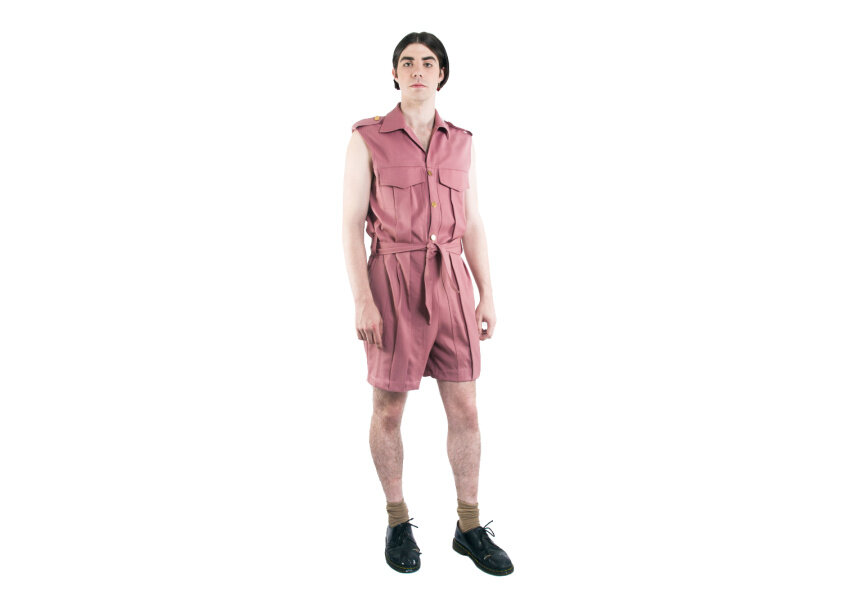
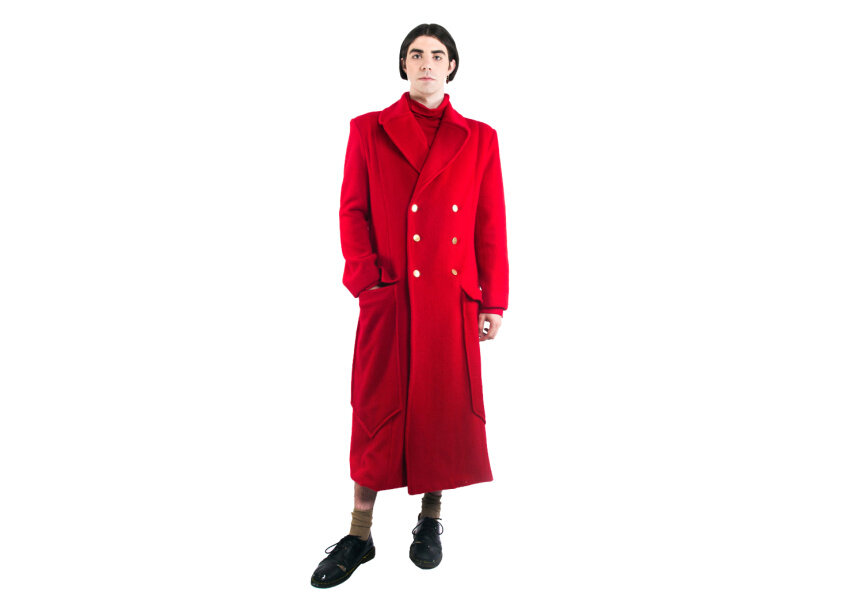
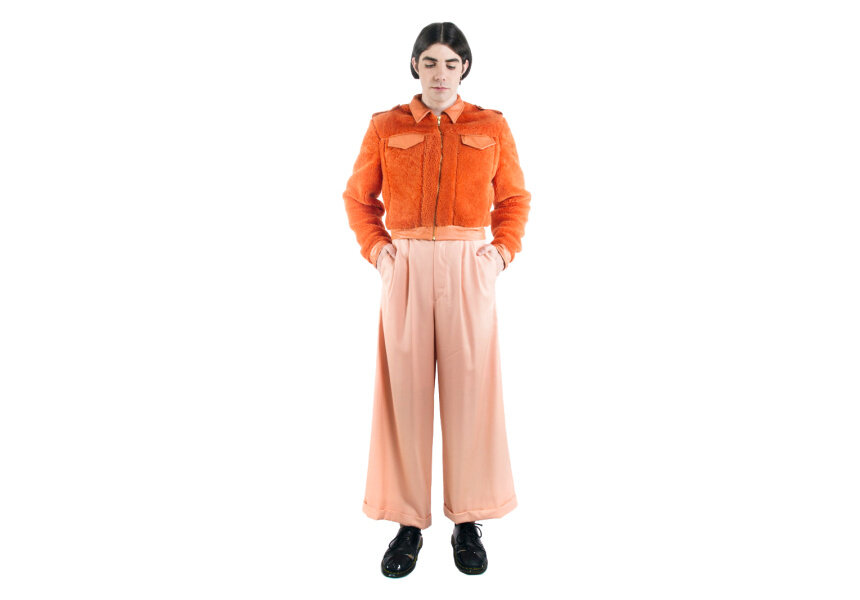
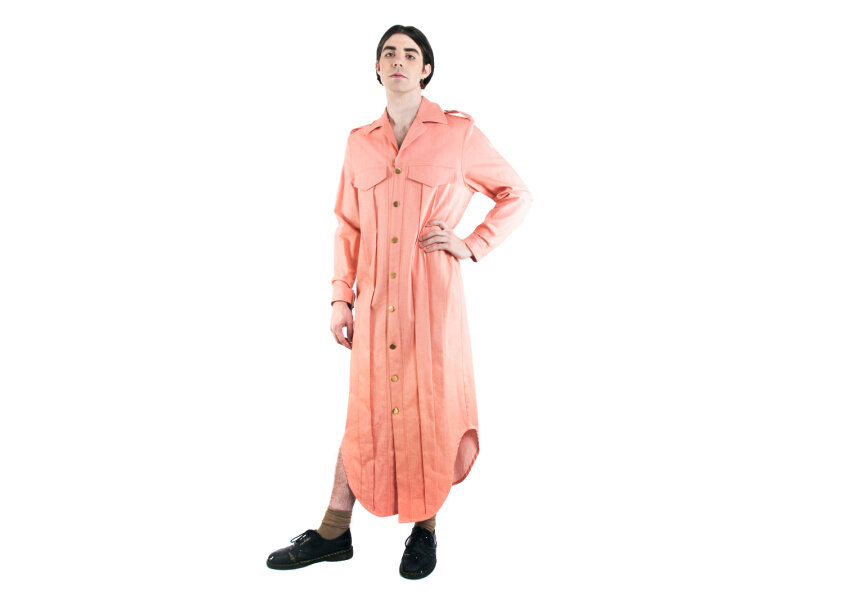
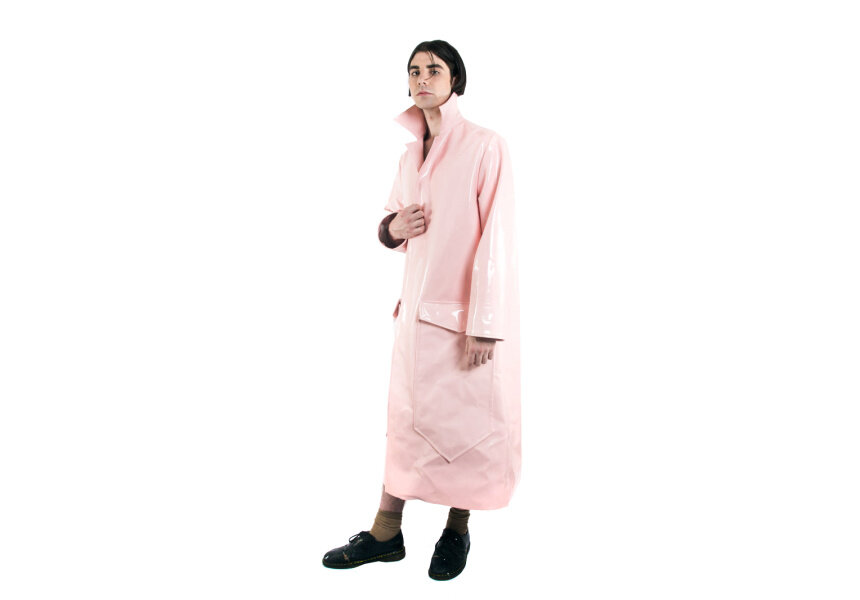

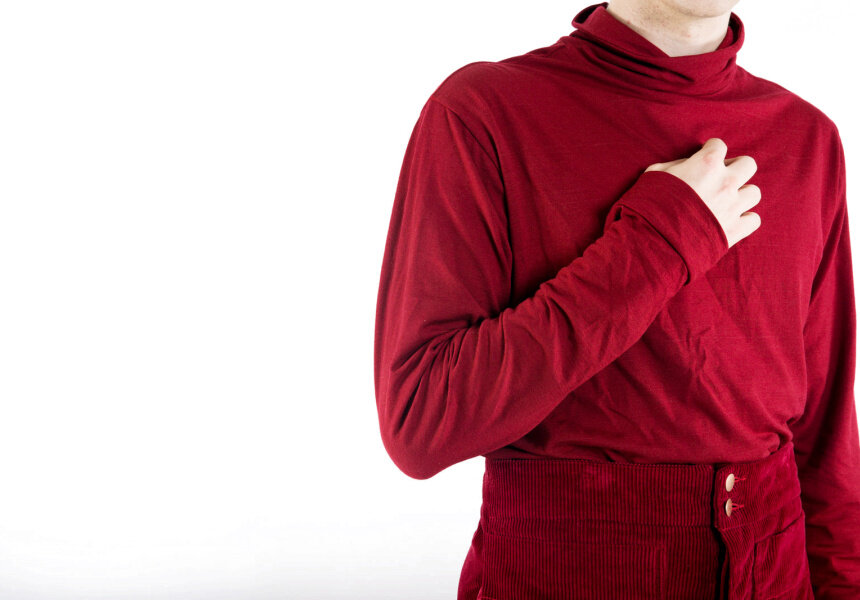

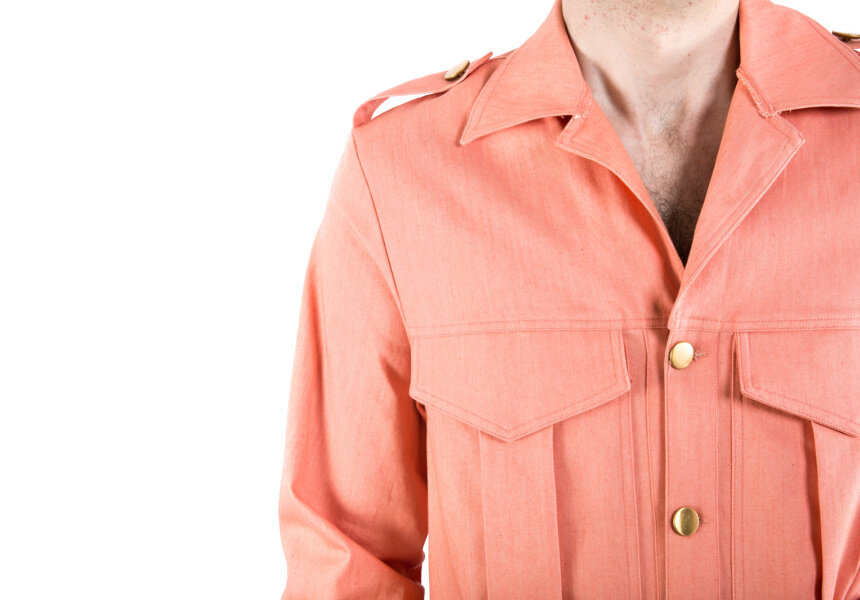





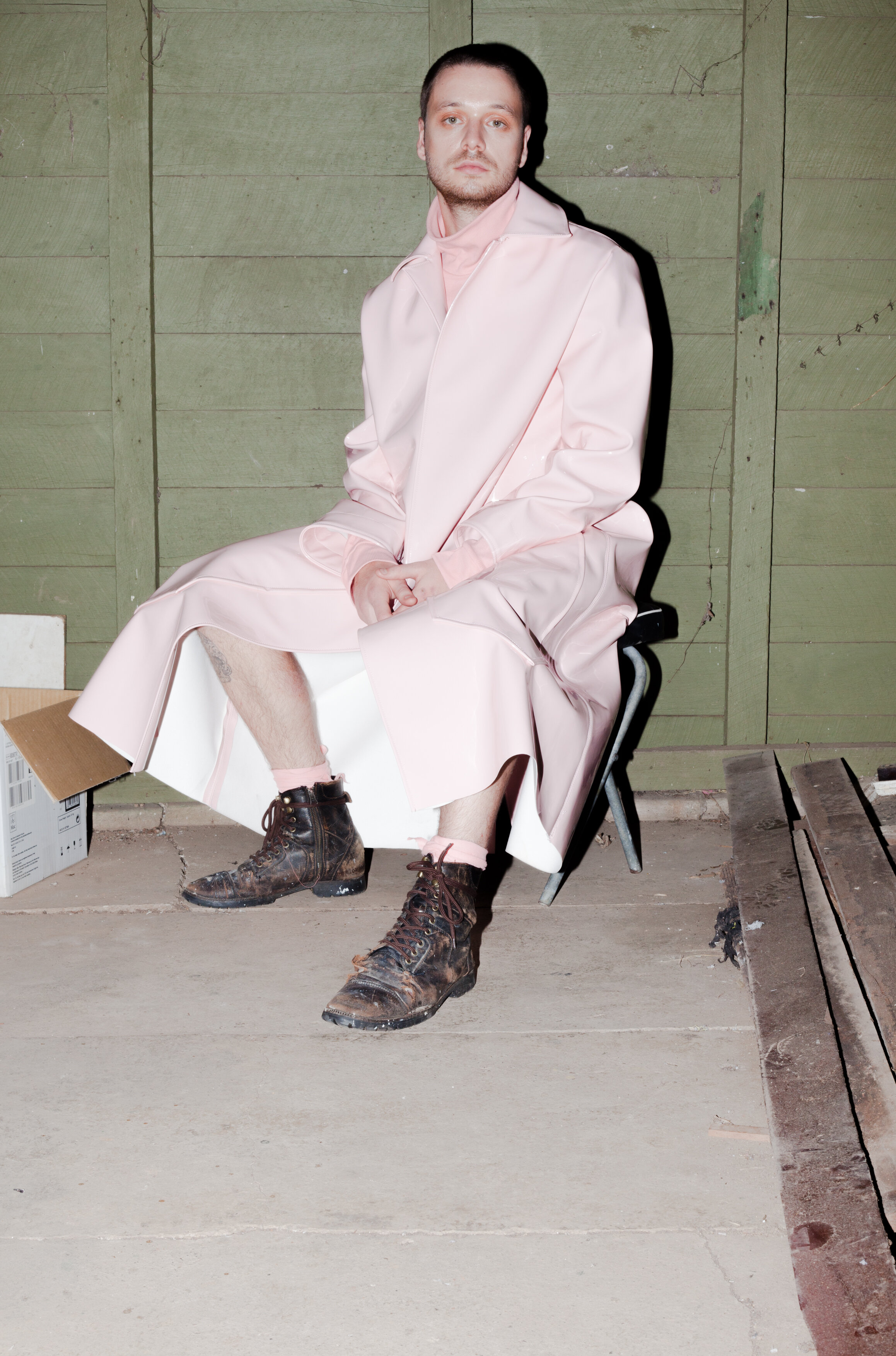







Boys and Girls Are Choice
Bachelor of Fine Arts (Fashion) Graduate Collection. November, 2011
Queensland University of Technology
Boys and Girls Are Choice
My graduate collection Boys & Girls Are Choice was aimed at creating a 'new punk', with a focus on traditional suiting, paying special attention to the nuances of menswear that are so important in the sartorial elegance of a well-made suit.
The intention was to create a new spin on the saturated punk aesthetic of the 1970s. Working with punk staples such as tartan, which was banned in England for its anarchic connections in the 1700s for its association with the rebels of the Scottish highlands, whose people were seen as a vestige of a wild, untamed, rebellious past that needed to be subjugated.
Sourced from the wool mills of Scotland, each tartan belongs to a clan and filled the history of the clan’s past. I have selected the tartans of the Culloden, Stewart dress tartan in white and navy, Thompson hunting tartan, Buchannan, and McLeod of Lewis. Specially designed digital prints compliment the colour and patterns of the tartan while adding a subtle contemporary edge.
Combining the tartan's rebellious history with traditional menswear styles throughout history, I wanted to use these guidelines of menswear to create a collection that can be worn by either men or women, setting aside gender roles and conventions, and embracing the androgyny and inadvertent sexiness of tailored clothing.
Videography and editing: Becky Strong
Photography: Kai Kenman
Models: Miguel Aquilizan, Isobel Larkin, Elena Larkin, Kate MacKenzie, Wade Tibalte, Samuel Vucko















